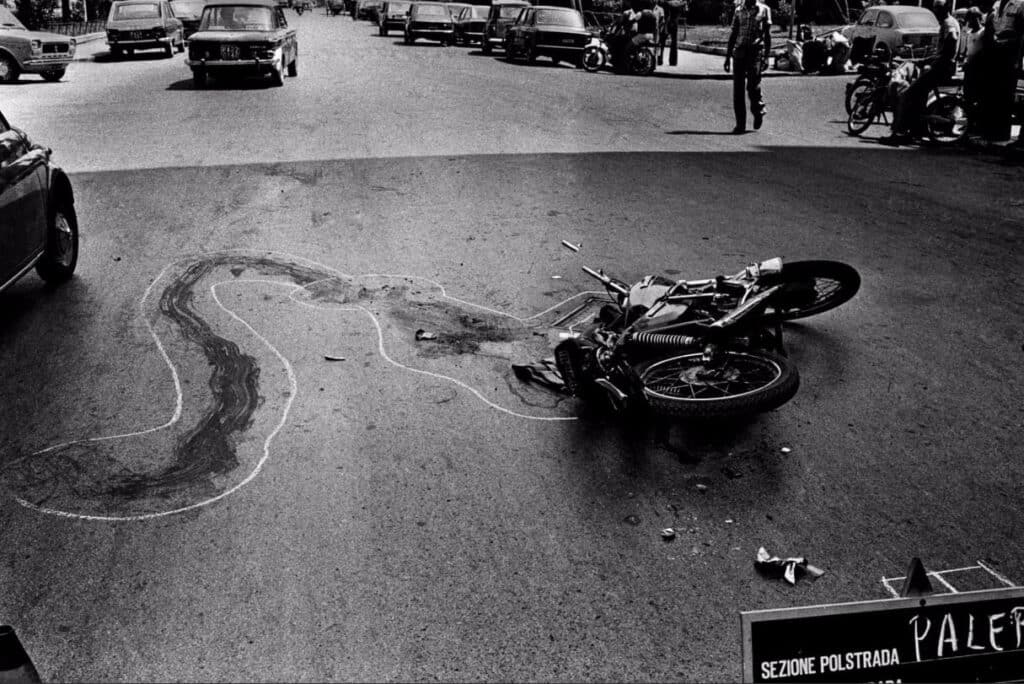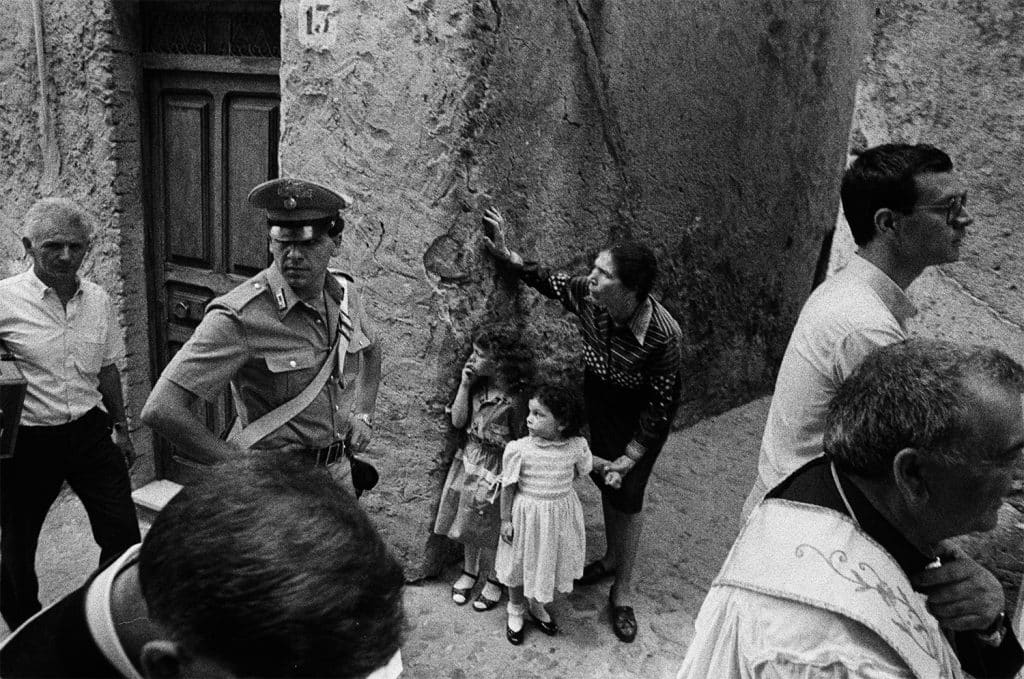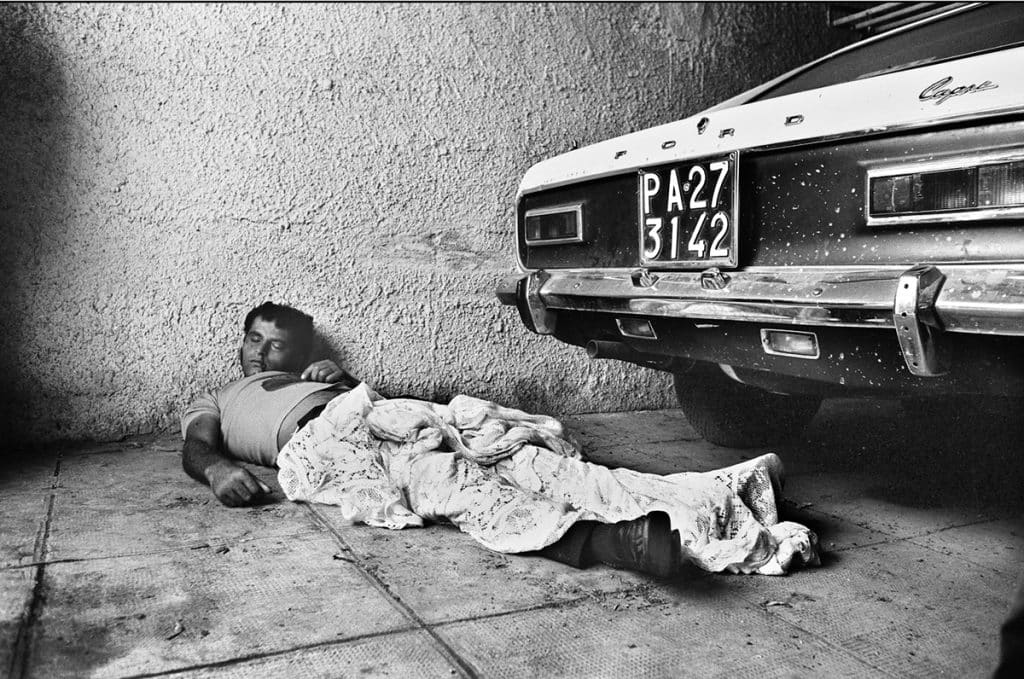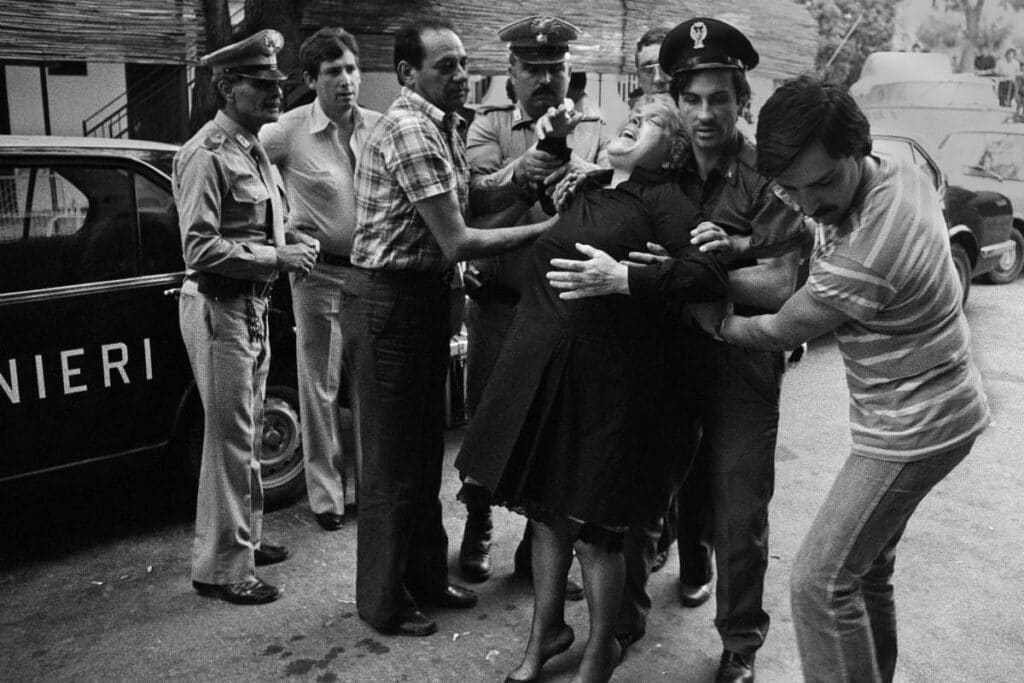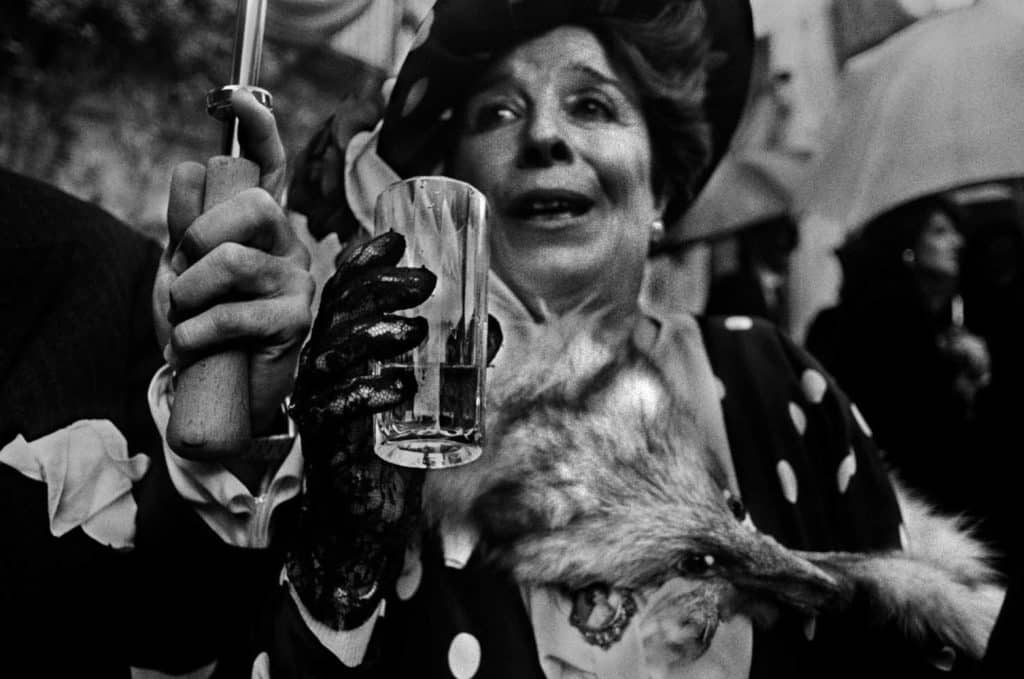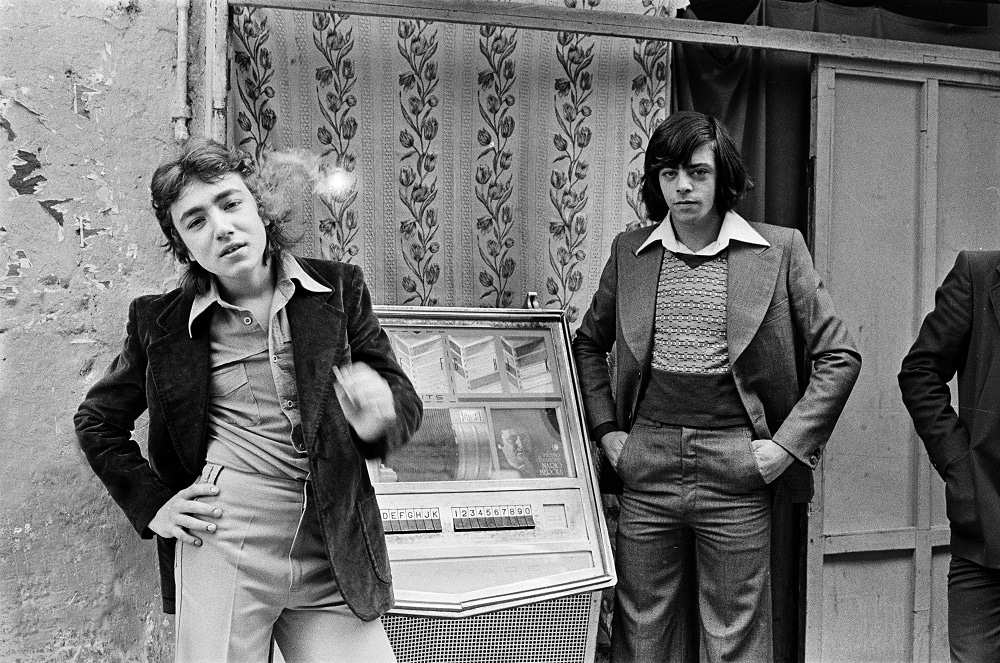Mayor Leoluca Orlando said late Wednesday that Letizia Battaglia played “an emblematic part in the process of freeing Palermo from the Mafia’s control”. On an island where omerta, the code of silence, was all but law, Battaglia used her Leica camera to speak out before going on to become a local politician with the Green Party working with investigating judges to bring convictions against 474 members of mafia clans in 1986.
As the first Italian woman photojournalist at a daily newspaper, Battaglia used her images as weapons to fight back, bearing witness to the mafia’s relentless campaign of terror during the 1970s and ‘80s. Working for the Sicilian newspaper L’Ora, Battaglia became a voice for the murder victims and their families, putting her life on the line to create over 600,000 images that reveal the death and destruction of organized crime. “Suddenly, I had an archive of blood,” Battagia once said.
By putting brutal murders on the front page, Battaglia directly confronted and challenged the mafia clans, portraying their actions as cowardly for killing unionists, women, children, and magistrates who refused to be subjugated. For her efforts, Battaglia received death threats, anonymous letters, had her camera smashed, and was spit upon. “I was sure they’d kill me. It gave me courage,” she said in the 2019 documentary film, Shooting the Mafia.
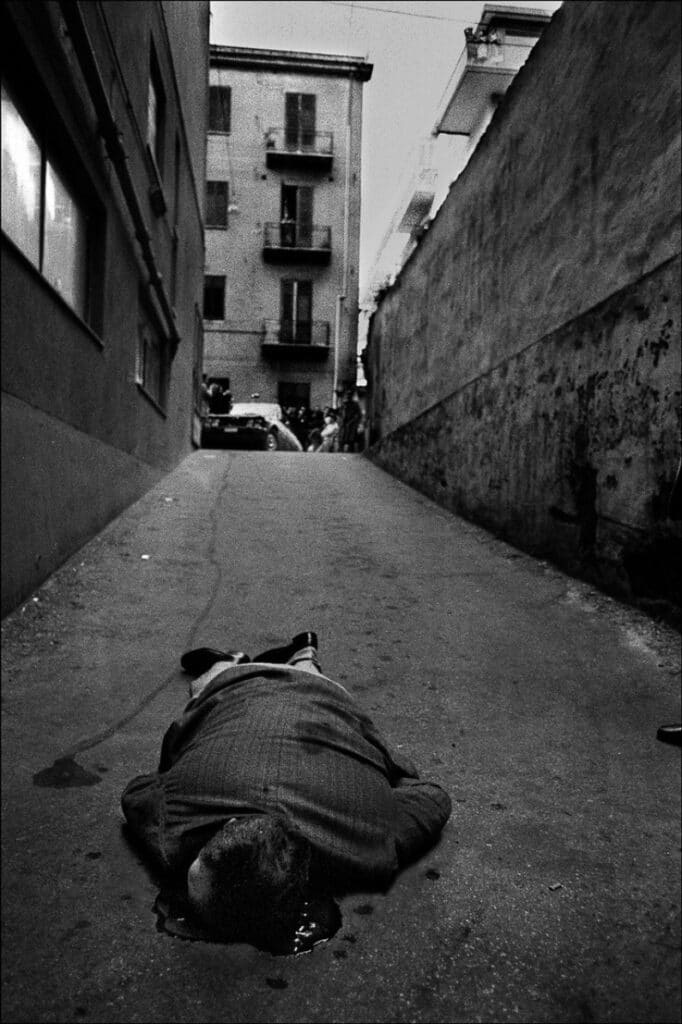
The Making of a Renegade
“I wasn’t a real person,” Letizia Battaglia said in Shooting the Mafia, describing the first 40 years of her life before discovering photography as a tool of liberation. Coming of age in postwar Palermo, Battalgia remembers seeing a man masturbate in front her on a local street when she was just 10 years old. In response, her father locked her in the house, blaming her for inciting men’s desires.
After being sent away to Catholic school, Battaglia became an atheist and vowed escape. She married a wealthy older man at age 16, bore 3 daughters, and found herself trapped once again. “Women were expected to be subservient to men’s rules,” she said in the film. “We dreamed of our freedom.” Unable to endure the oppression, Battaglia had a mental breakdown and was hospitalized in Switzerland for two years. Upon her release, she returned to Italy and realized she needed to strike out on her own.
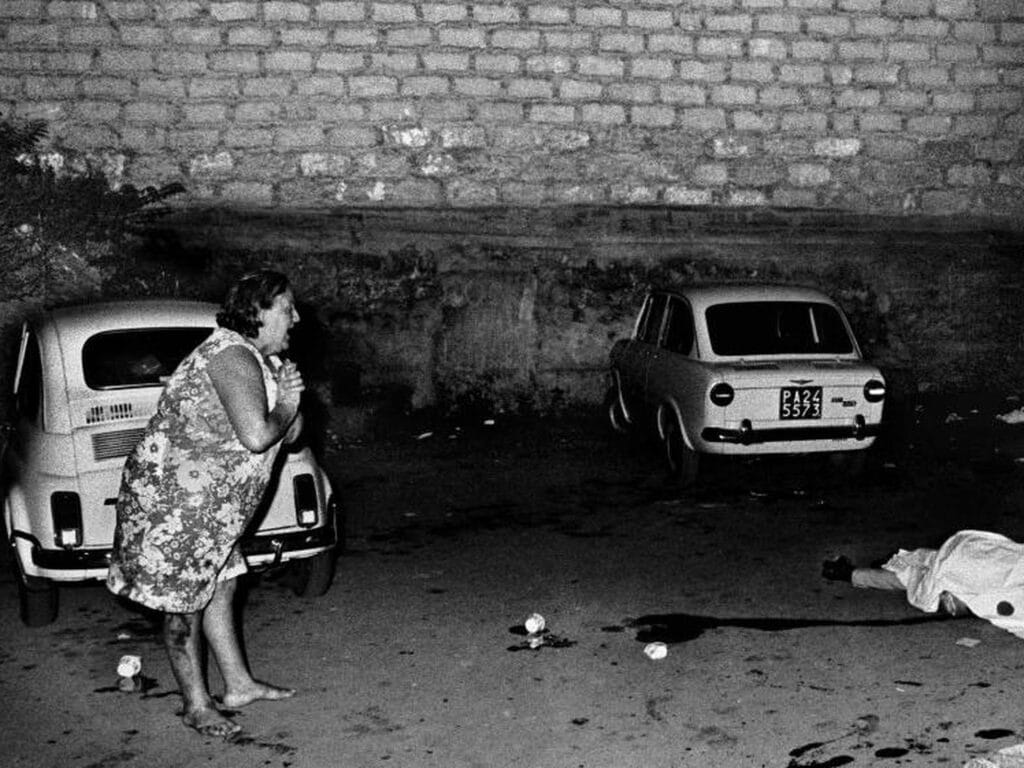
After her divorce in 1971, Battaglia, then 40, took up photojournalism. Three days after joining L’Ora, she saw her first murder victim. “It never leaves you,” Battaglia said in the film. Aligning herself with those whose lives were crushed and destroyed, Battaglia began her quest for justice. She photographed both the victims and the mafia themselves, denying them the protection of silence and invisibility.
“Letizia has all the attributes of what we associate with men,” said Kim Longinotto, director of Shooting the Mafia. “As a woman, you had to be chaste and centered on the family, and men go out and work. I love when Leitizia says, ‘I put my work first, and if you don’t like it, you can fuck off.’”
The Aftermath
“With photography, I could tell me a story,” Letizia Battaglia said in Shooting the Mafia. Unlike Hollywood’s romanticized portrayal of mafia clans, Battaglia focused on the victims themselves, showing the impact of living in a war without end.
“I’ve seen a lot of Hollywood mafia films and found them really entertaining and beautifully done but you are entering into a particular mindset and way of seeing — you’re in the world of the mafia,” said Kim Longinotto, director of Shooting the Mafia. “You’re in their side and following their stories. People get shot and the shootings are very casual. This is what startled me about Letizia Battaglia’s photographs; they are about the aftermath of the shooting. You are experiencing the shooting from the point of view of ordinary people and a community. You see the family, people in the street, children walking to school. You see the murders in a different way.”
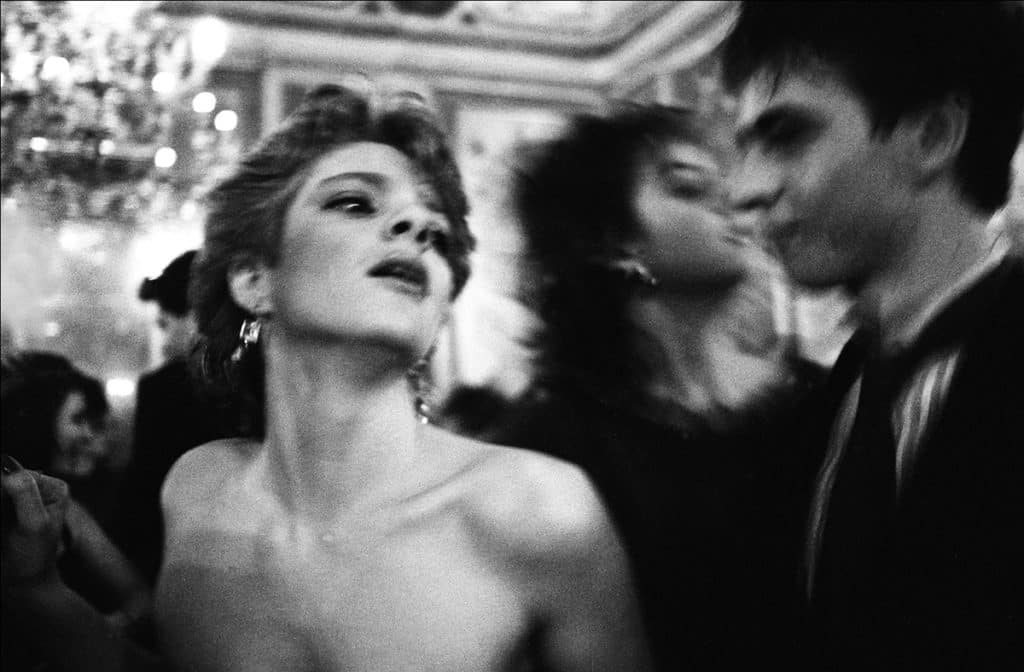
But the constant exposure to trauma and stress eventually took its toll, and after 20 years behind the camera, Battaglia left photojournalism. One of her final photographs is of a young boy who was killed after seeing his father murdered. “It was never the same,” Battaglia said in the film. “You can never be happy after that kind of horror.”
An Everlasting Love
“I’ve always considered Letizia Battaglia to be the real godmother of documentary photography in the 20th century,” said photographer Donna Ferrato, who first met Letizia Battaglia when the two won the W. Eugene Smith Grant in Humanistic Photography in 1985. “We shared an important honor that was made even more powerful by our share passion. We were both documenting the violence of men against society, the public and the private.”
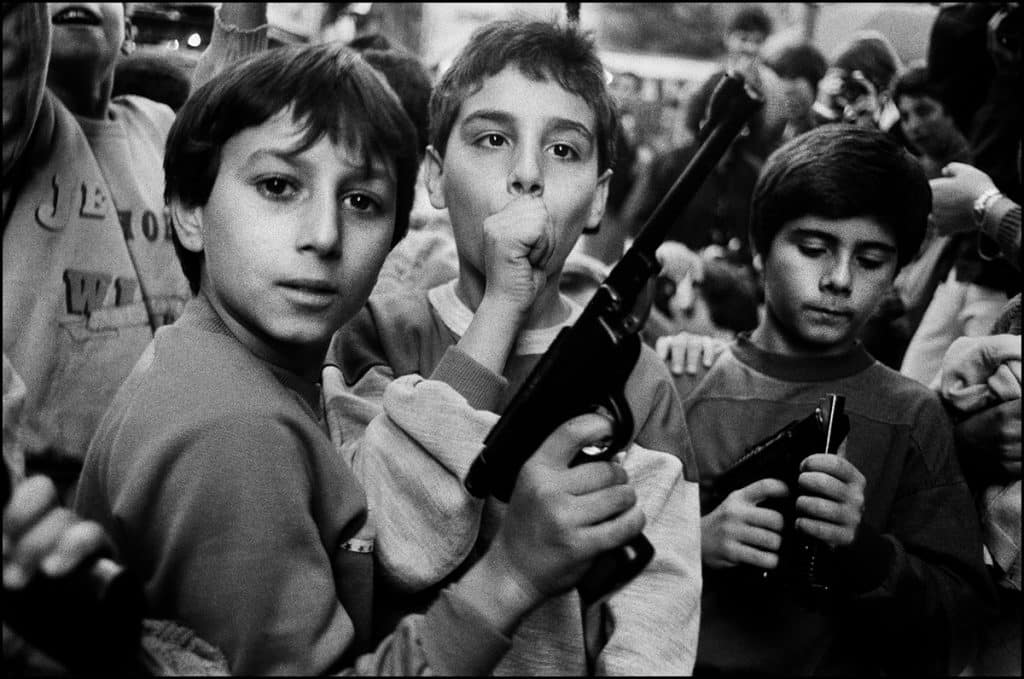
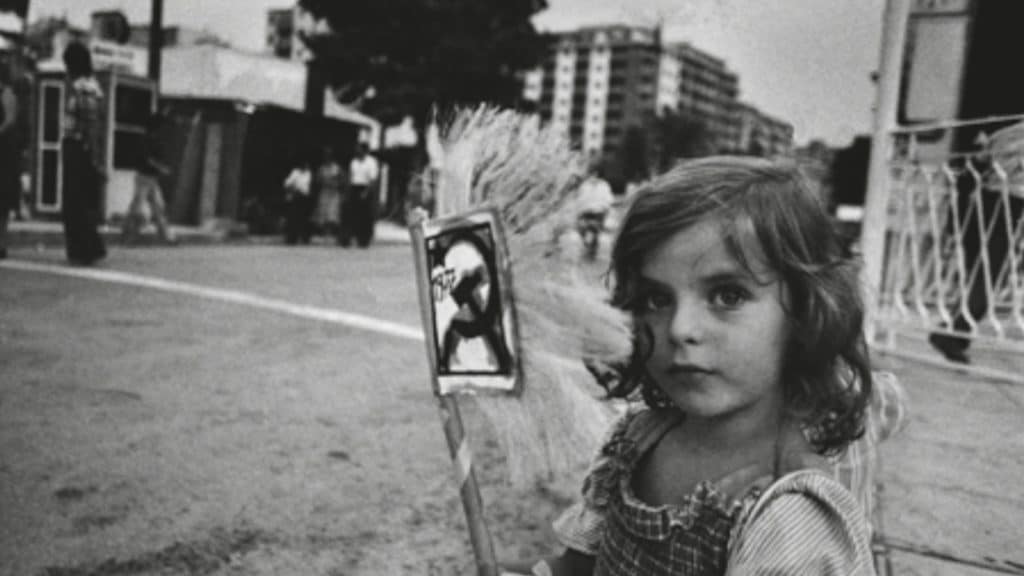
Ferrato described their relationship as one of sisterhood, two self-described “feisty women” who did not ascribed to traditional roles of womanhood. “There was something divine about her voice, her sense of humor, and her wickedness. Letizia had a free spirited, naughty side but she was also very generous and selfless,” Ferrato said.
“A few years ago I did a workshop called the Sacred Eye, honoring women who are in shelters running from violent men. At the end of the day, the photographers met with Letizia. She looked at their work and spoke with them. She was so inspiring. You look at her work and you see the heart she has for the people in the streets, the children the old women. She just cared so much. She never lost that.”

